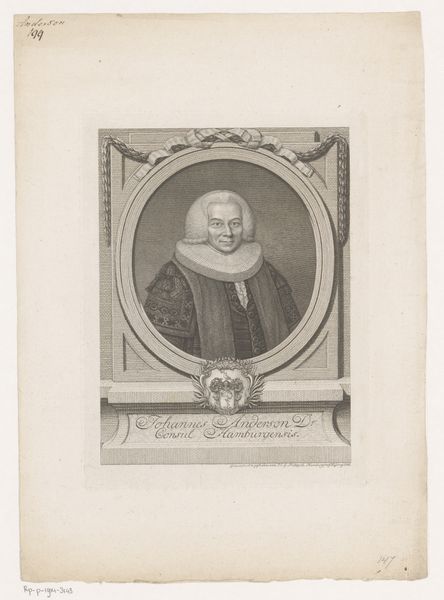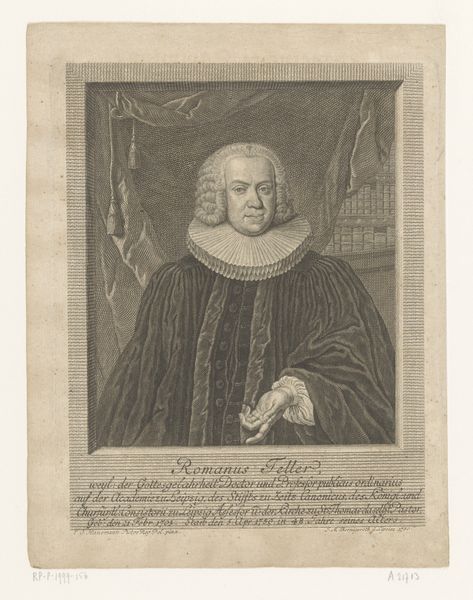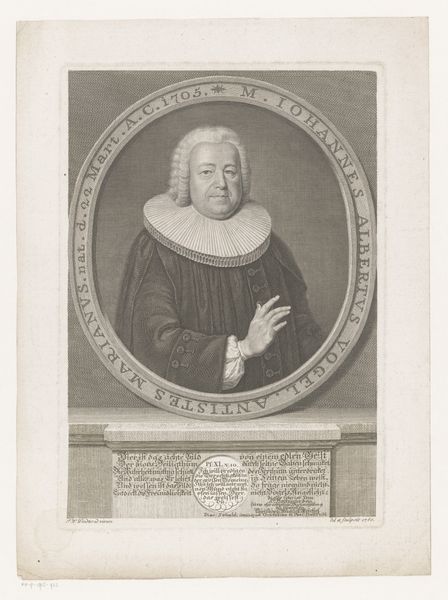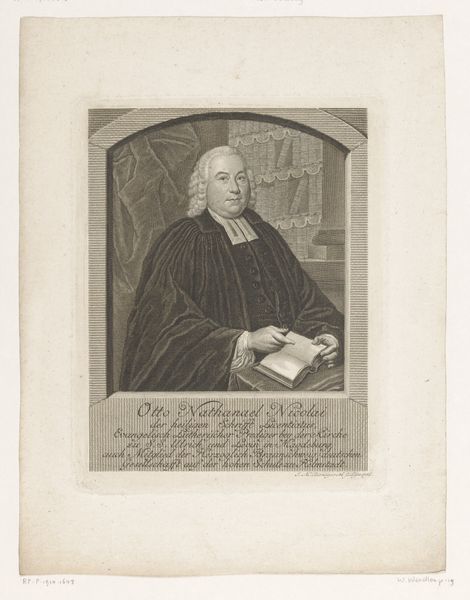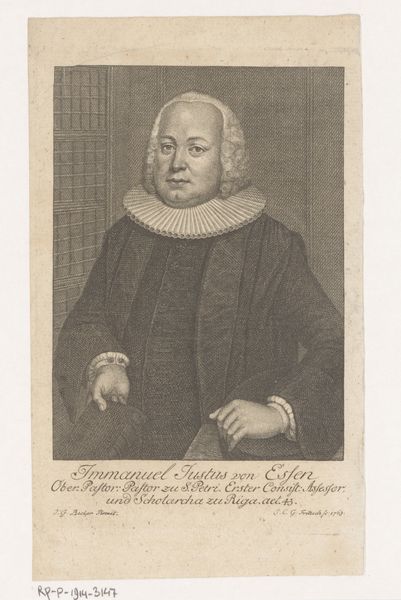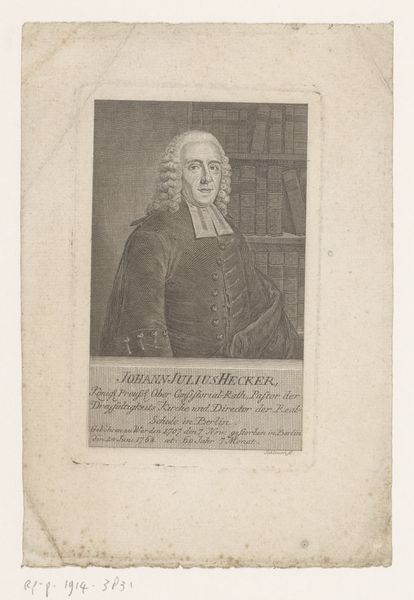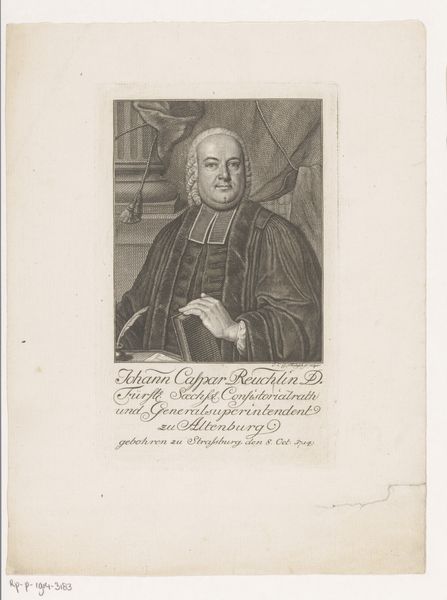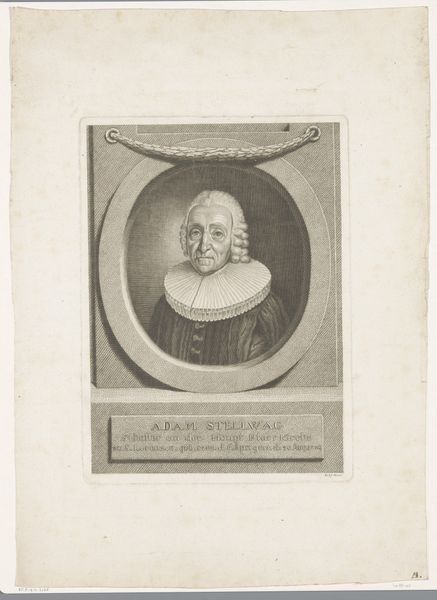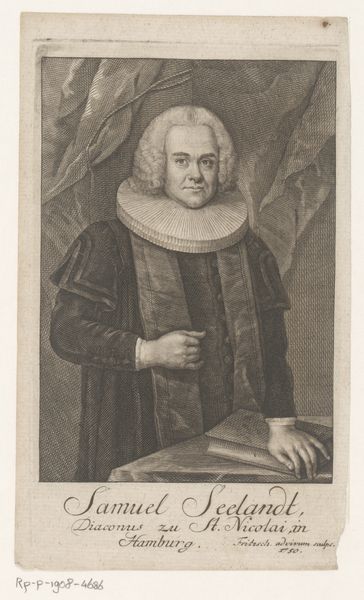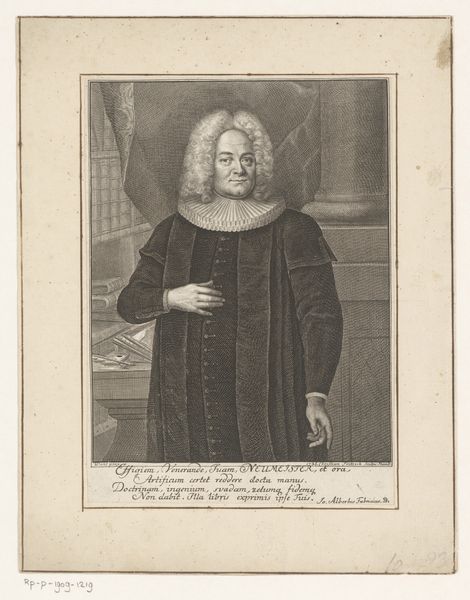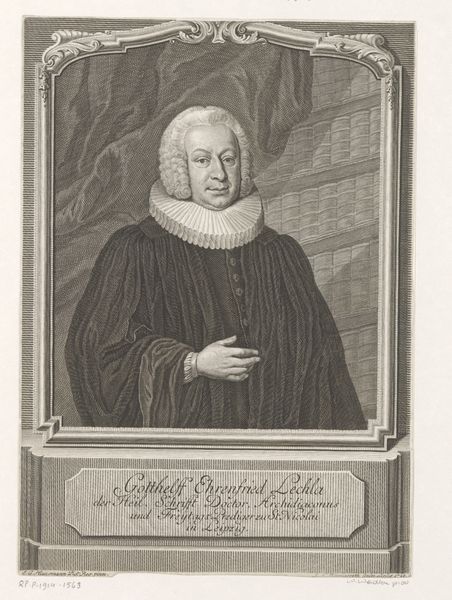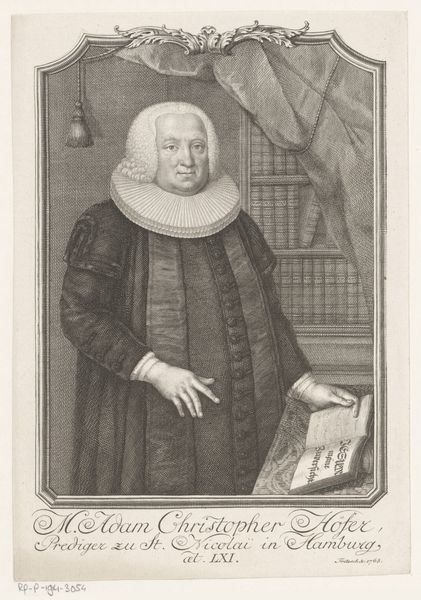
Portret van Matthias Lüttmann op 60-jarige leeftijd 1769
0:00
0:00
johannchristiangottfriedfritzsch
Rijksmuseum
Dimensions: height 142 mm, width 95 mm
Copyright: Rijks Museum: Open Domain
Curator: Here we have a finely detailed engraving from 1769 by Johann Christian Gottfried Fritzsch. It's titled "Portret van Matthias Lüttmann op 60-jarige leeftijd," which translates to "Portrait of Matthias Lüttmann at the age of 60." Editor: My first impression is one of serious formality. The crisp lines of the engraving lend it an air of precision and order. There's a certain stoicism in the sitter's gaze that immediately strikes me. Curator: Indeed. Lüttmann was likely a person of considerable standing, and his portrait reflects the social structures of the late 18th century. The subject's attire and the presence of books in the background point to a life of scholarly or professional pursuit, emphasizing status through symbolic markers of intellect and prosperity. Editor: Absolutely. Structurally, notice how the composition centers around his face and the elaborate ruff emphasizing his position, and the restrained color palette highlights the sitter’s composed expression. Semiotically, the book is not just a book—it signifies learning and, consequently, authority. Curator: Beyond status, portraits such as these provide insights into period aesthetics, gender roles, and even the socio-political landscape. Was Lüttmann connected to governmental structures? What would this imagery signify for his contemporaries navigating an increasingly stratified society? Editor: True. But aesthetically, the contrast between the finely rendered details of his face and clothing, achieved through masterful use of line and shadow, create a focal point within the relatively stark composition, further emphasized by the texture within the book spine he is touching. It focuses the narrative. Curator: For me, that interplay really tells us much more about representation in that time than perhaps immediately meets the eye. It hints at how individuals and artists collaborated in crafting self-images to both uphold and perhaps negotiate or subtly challenge social conventions. Editor: Looking closely, I see the almost surgical precision. How Fritzsch uses line weight to define form is remarkable—almost like a sculptural approach in two dimensions. It is almost as if you could touch the ruff or feel the paper of that book. Curator: Understanding artwork like these is also recognizing the power dynamics embedded in visual culture. Even today, the legacies of such representations affect how we perceive and categorize one another within current societal narratives. Editor: Yes. I appreciate how examining this piece can encourage us to question not just what is depicted, but how—revealing layers of both individual expression and systematic social order reflected through choices in technique. Curator: It is important for considering how visual artistry continues its engagement with culture in a changing social sphere. Editor: Indeed. Analyzing form amplifies an artwork’s resonance through history.
Comments
No comments
Be the first to comment and join the conversation on the ultimate creative platform.

